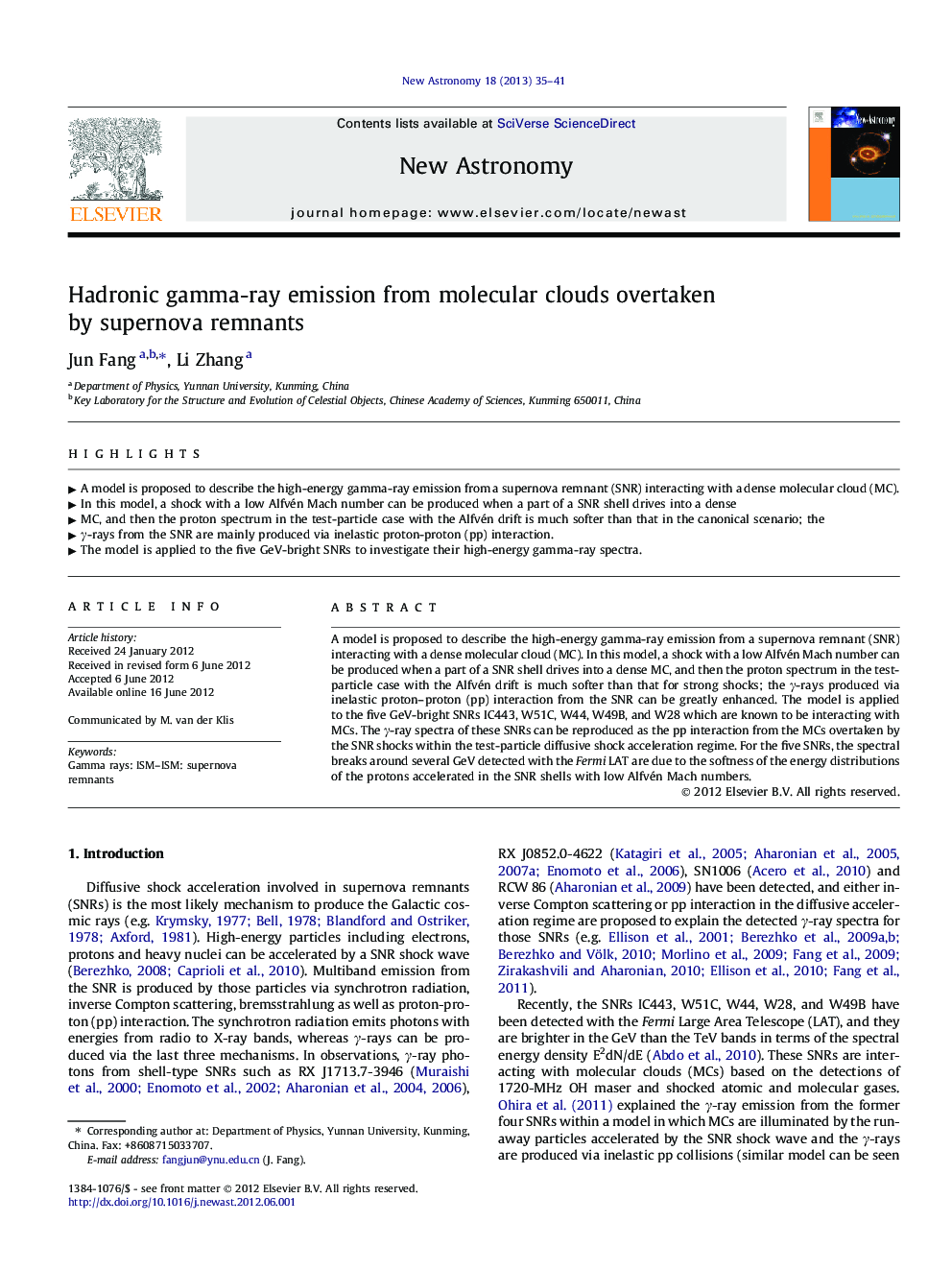| Article ID | Journal | Published Year | Pages | File Type |
|---|---|---|---|---|
| 1779194 | New Astronomy | 2013 | 7 Pages |
A model is proposed to describe the high-energy gamma-ray emission from a supernova remnant (SNR) interacting with a dense molecular cloud (MC). In this model, a shock with a low Alfvén Mach number can be produced when a part of a SNR shell drives into a dense MC, and then the proton spectrum in the test-particle case with the Alfvén drift is much softer than that for strong shocks; the γγ-rays produced via inelastic proton–proton (pp) interaction from the SNR can be greatly enhanced. The model is applied to the five GeV-bright SNRs IC443, W51C, W44, W49B, and W28 which are known to be interacting with MCs. The γγ-ray spectra of these SNRs can be reproduced as the pp interaction from the MCs overtaken by the SNR shocks within the test-particle diffusive shock acceleration regime. For the five SNRs, the spectral breaks around several GeV detected with the Fermi LAT are due to the softness of the energy distributions of the protons accelerated in the SNR shells with low Alfvén Mach numbers.
► A model is proposed to describe the high-energy gamma-ray emission from a supernova remnant (SNR) interacting with a dense molecular cloud (MC). ► In this model, a shock with a low Alfvén Mach number can be produced when a part of a SNR shell drives into a dense MC, and then the proton spectrum in the test-particle case with the Alfvén drift is much softer than that in the canonical scenario; the γγ-rays from the SNR are mainly produced via inelastic proton-proton (pp) interaction. ► The model is applied to the five GeV-bright SNRs to investigate their high-energy gamma-ray spectra.
